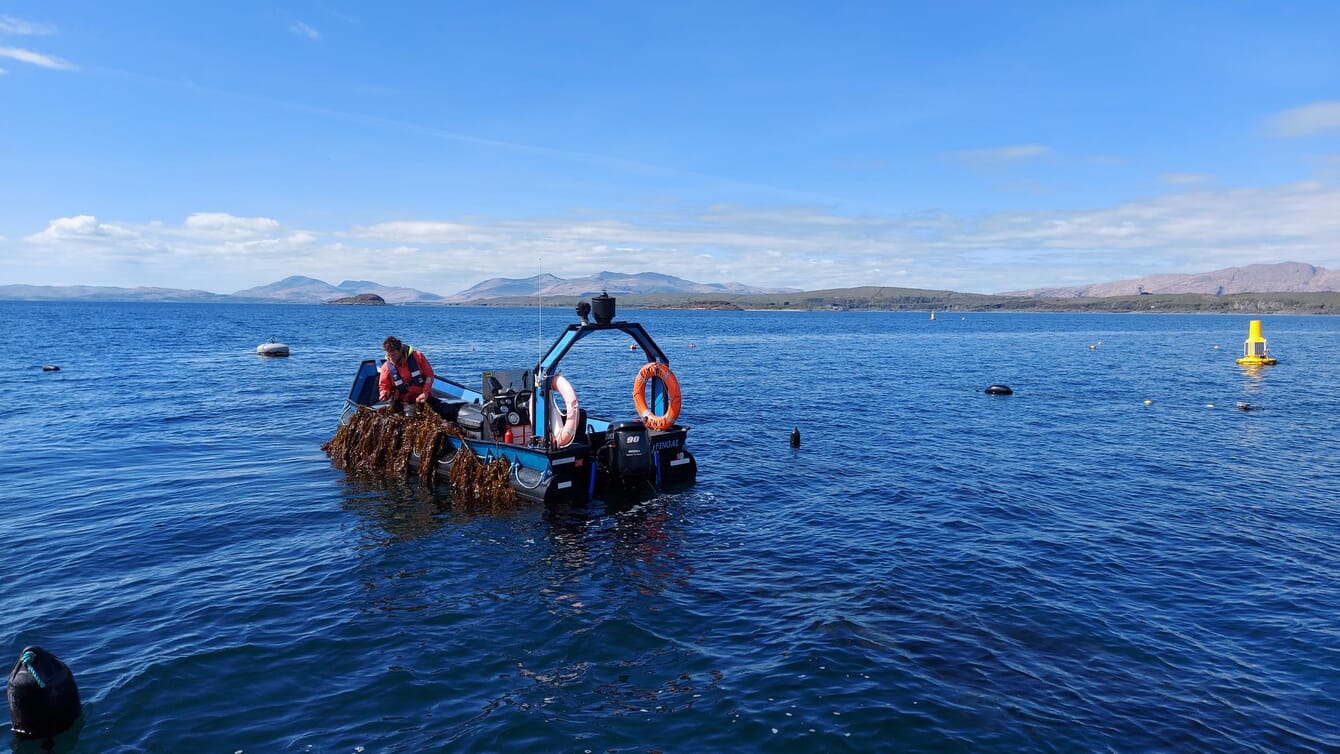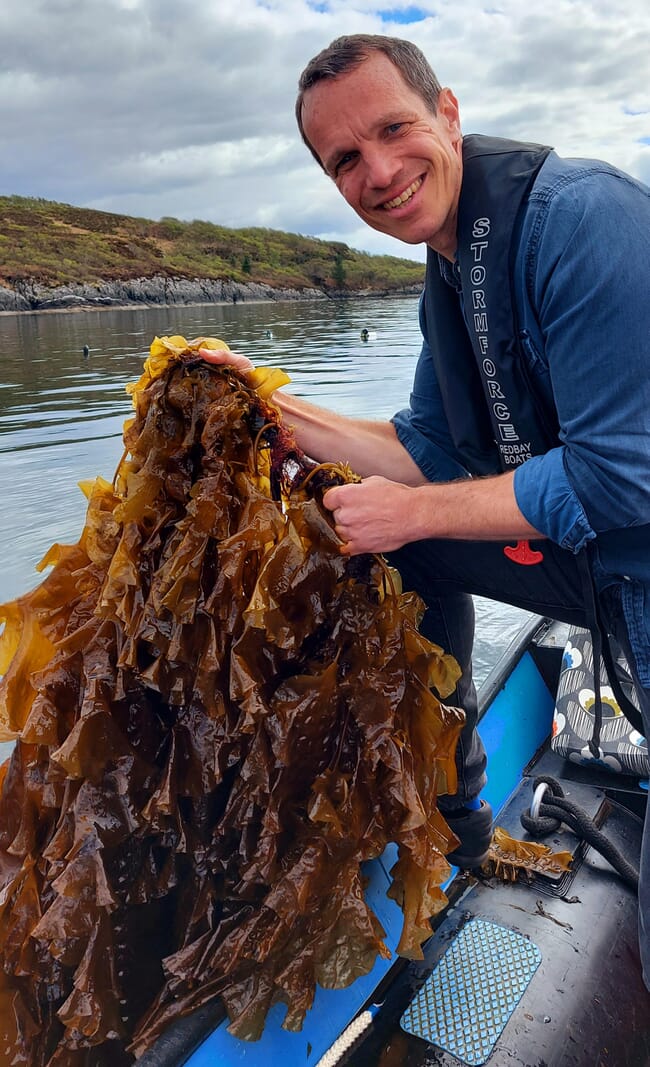
It is estimated that by cultivating just 2 percent of the oceans with seaweed, the protein requirements of the whole planet could be met. Beyond just food, seaweed could not only be used to decarbonise our oceans, but also manufactured into a plastic alternative. These are some of the many benefits of seaweed covered by author Vincent Doumeizel in his new book, The Seaweed Revolution.
A main staple in Asia, seaweed suffers from many misconceptions, while its benefits remain unknown to most Western countries. Yet, there’s more to seaweed than just food, and cultivating it could be one of the ways to help tackle climate change. Through photosynthesis, it may, for example, represent the only large-scale natural solution for capturing carbon from the atmosphere and returning it to the Earth’s soil, which could help achieve the ambitious, yet necessary, net zero targets set by global governments.
The evidence presented by the book also shows that seaweed could be used as a biodegradable building material and a substitute for plastic, which could prove crucial when it comes to future waste management. While still in early development, many start-ups around the world have developed prototypes of seaweed-based items, from tampons to takeaway boxes.

In The Seaweed Revolution, Doumeizel raises awareness of the little-known benefits of seaweed
As author Vincent Doumeizel states in a press release: “The evidence speaks for itself – seaweed is the greatest untapped resource on the planet, and harnessing its power should be a priority to combat climate change and feed populations.
“With this book, I hope I can raise awareness of the little-known benefits of seaweed, while simultaneously encourage changemakers to incorporate a seaweed strategy into their broader climate plan. There’s no one way out of the climate crisis, but seaweed farming certainly provides solid, long-term answers to many problems we must address.”
As well as providing an inventory of seaweed uses, the book also serves as a manifesto to encourage world leaders and decision-makers to act. Among the potential challenges identified is the lack of safety standards to cultivate seaweed – one of the biggest hurdles to developing seaweed farming on a larger scale safely.




